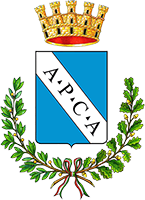OF ST. FRANCIS

OF ST. FRANCIS
This church was founded in the year 1287 when Fra Bartolomeo of the Minor Monks had a new church dedicated to St. Philip and St. James built over an earlier parish church. The entire complex composed by the church and the adjacent convent, was later dedicated to St. Francis of Assisi. The church was completed by 1291, as witnessed by Pope Niccolò IV’s Papal Bill “Licet is”, who issued an indulgence of forty days for the devotees who visited it during the main feast days.
The church facade, with its hut-shaped form, was completed between 1401 and 1406 by the following artists: Menuccio Menucci from Amelia, Giovanni di Nicola from Castel dell’Aquila and Santo di Domenico di Carignoli from Todi. Some scholars believe that travertine slabs, coming from a Roman age pyramidal sepulchre, were used to build the facade, as well as the grey-rose-coloured local stone. A marble splayed doorway dominates the lower section of the facade, while the upper section has a magnificent concentric rose window and a series of small triple-bayed blind arches running along beneath the roof. To the left side of the church rises a bell tower erected in 1447 by Lombard workforce. It collapsed after the earthquake of 1915 and it was rebuilt in 1932.
The church interior was totally revolutionized by Baroque renovations during the second half of the 18th century. It has a single nave with a barrel vault ceiling and a higher triple-apse presbytery, with a dome above it. The painting cycle that adorns the presbytery is coeval to the architectural restoration and it is attributed to the painter Vincenzo Monotti (Perugia 1734-1792). Of great interest is the Geraldini Chapel, dedicated to St. Anthony of Padua and placed on the right side of the nave, it was commissioned by the Bishop Giovanni Geraldini in 1476 as family sanctuary. It houses the funeral monument of Matteo and Elisabetta Geraldini, a masterpiece of Renaissance sculpture executed by the famous Florentine sculptor Agostino di Duccio (Florence 1418-Perugia 1481).
In this work, Agostino conveys his talent in two low-relief sculpted angels praying to St. Anthony, revealing a taste for linearity. Also remarkable are the marble memorials of Camillo (died in 1480) and Belisario (1482), are remarkable too. The deceased lie on a refined classical catafalque and two moved angels, holding up the Geraldini’s lineage weapon, rest on it. Of the same style is the grave of Messer Geronimo (Podestà of Florence between 1473 and 1474, died in 1481), which is attributable to the Roman workshop of the Lombard sculptor Andrea Bregno (Osteno 1421-Rome 1506), while the latest work inside the chapel, Angelo Geraldini’s monument (1486), is considered much more refined and therefore, it is attributed to Luigi Capponi, Bregno’s pupil and author of his master’s funeral monument, located inside the church of “Santa Maria Sopra Minerva” in Rome.
Finally, other noteworthy works of art are the wooden choir, that dates back to 1411, and the Medieval frescoes painted on a small compartment’ walls in front of the doorway. Here, the only intact space of the original 14th century building, a remarkable Crucifixion belonging to the School of Giotto stands out.


